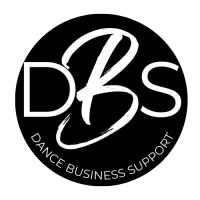In the dynamic and competitive world of dance studios, understanding and defining your target audience is a crucial step towards long-term success. A dance studio’s ability to connect with the right demographic can make the difference between thriving and merely surviving. In this article, we’ll explore the importance of identifying your target audience and provide strategies for effectively reaching and engaging with them.
Why Define Your Target Audience for Dance Studios?
Tailored Offerings:
Identifying your target audience allows you to tailor your dance programs, classes, and events to meet their specific needs and preferences. Whether your focus is on classical ballet, hip-hop, or ballroom dancing, understanding your audience enables you to offer the right mix of styles and difficulty levels.
Marketing Efficiency:
Knowing your target audience streamlines your marketing efforts. Instead of employing a broad and generalized approach, you can create targeted campaigns that resonate with the interests and values of your specific audience. This not only saves resources but also increases the effectiveness of your marketing strategy.
Community Building:
Dance studios are not just about the dance; they are about building a community. Defining your target audience allows you to foster a sense of belonging among your students. When individuals feel that a studio caters specifically to their interests and aspirations, they are more likely to become loyal members of the dance community.
Strategies for Defining Your Target Audience for Dance Studios
Market Research:
- Conduct surveys and interviews with your current students to understand their demographics, preferences, and motivations for dancing.
- Analyze data from your studio, such as class attendance records, to identify patterns and trends among your existing clientele.
Competitor Analysis:
- Study the customer base of other successful dance studios in your area. What age groups, skill levels, and dance styles do they attract?
- Identify any gaps in the market that your studio could fill to cater to a unique segment of the population.
Create Customer Personas:
- Develop detailed customer personas representing your ideal students. Include information such as age, income, interests, and goals related to dance.
- Use these personas as a reference point when making decisions about class offerings, marketing campaigns, and studio events.
Feedback Loops:
- Regularly seek feedback from your students through surveys, social media, or in-person discussions. This ongoing dialogue helps you stay attuned to evolving preferences and needs.
- Adjust your offerings based on feedback to ensure that your studio remains relevant and responsive to your audience.
Online Presence:
- Leverage social media analytics to understand the demographics of your online followers.
- Tailor your social media content to appeal to your target audience, using platforms that align with their preferences.
Conclusion
Defining your target audience is an ongoing process that requires a combination of research, analysis, and adaptability. By understanding the unique needs and desires of your dance community, you can create a studio environment that not only attracts but also retains loyal and satisfied students. This strategic approach not only contributes to the success of your dance studio but also fosters a vibrant and engaged community of dancers.







